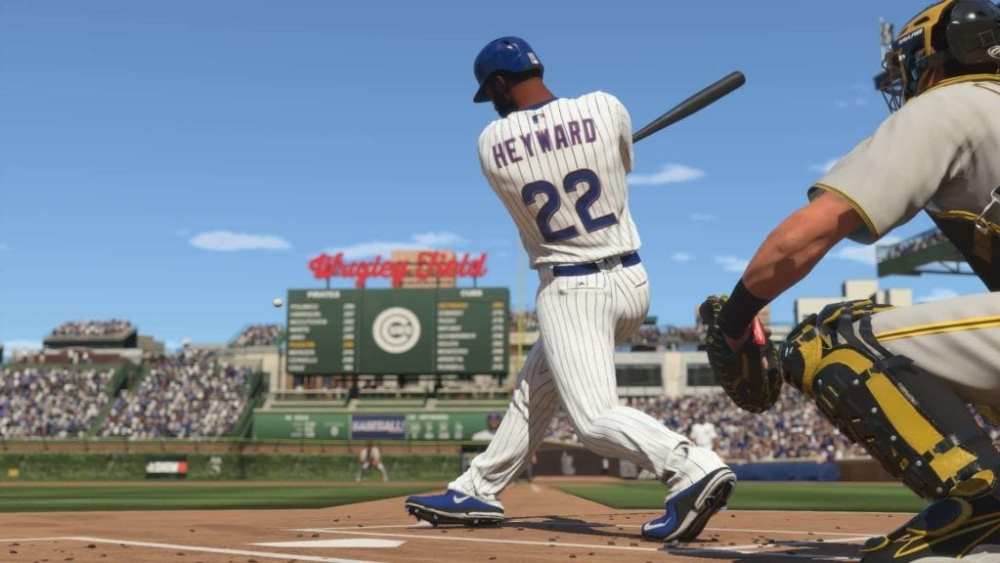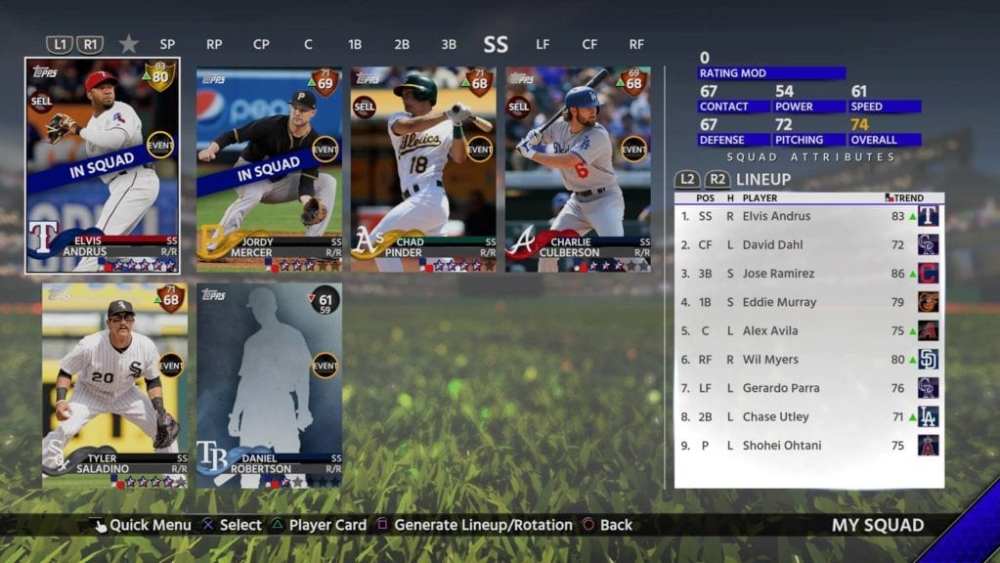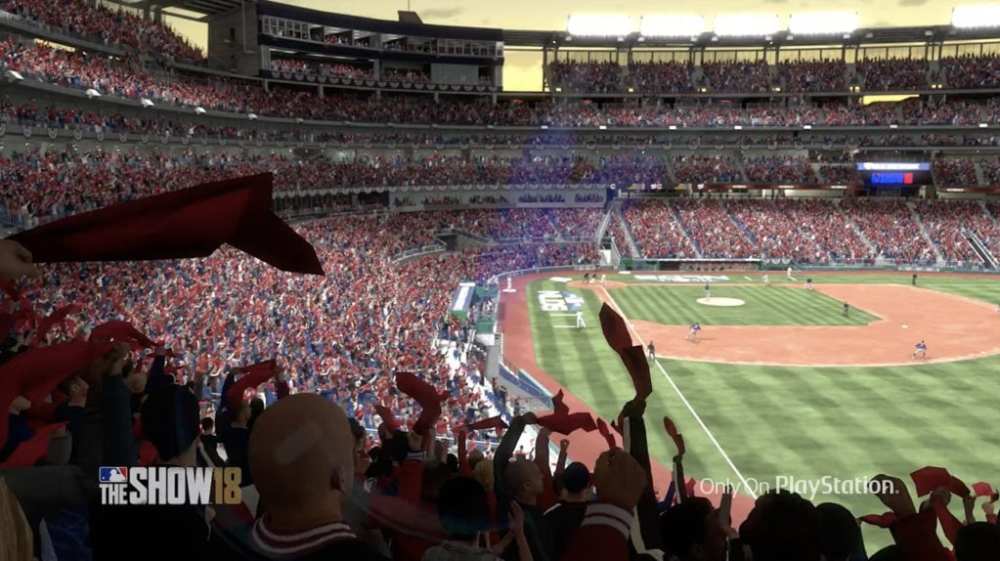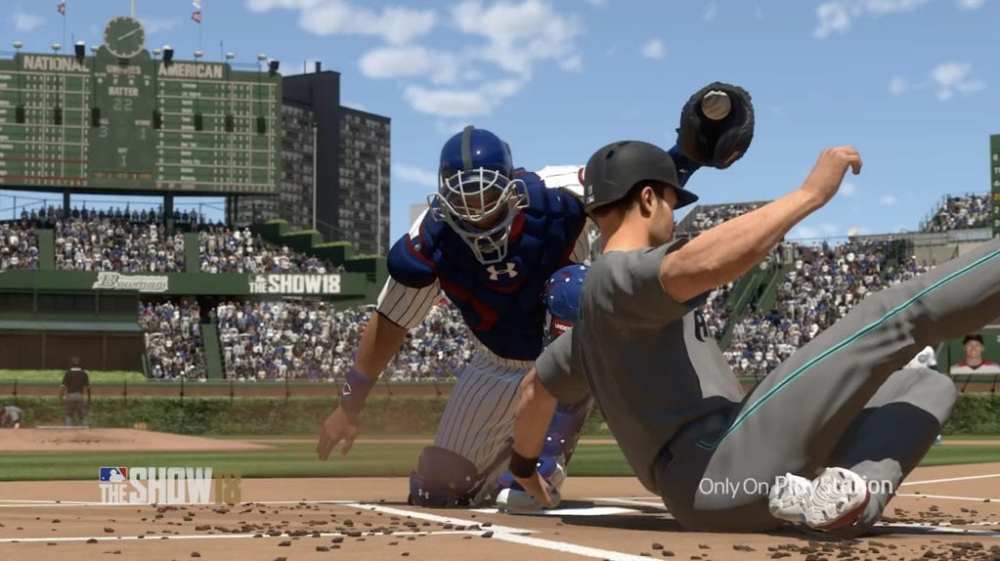As an avid lover of baseball and baseball video games, there is no better time than late March, at least for myself. Not only is opening day for the MLB here, but so is the yearly release of Sony San Diego’s newest installment of their long-running series, MLB The Show. That being said, while I enjoyed last year’s version of MLB The Show 17, there is no denying that for me, there was a bit of staleness that started to permeate the overall feel of the series. So have the developers found a way to make a sport that basically has remained the same in the modern era, feel new and exciting again — at least in terms of digitally replicating it on the PS4?

What I Like
Gameplay
Based off of the previously mentioned “staleness” that had started to creep into my favorite sports title, my expectations for The Show 18 were somewhat tempered, almost as an act of self-preservation. Thankfully though, most, if not all of these expectations were surpassed on the gameplay front, and many by a large percentage. The developers refined the ball physics, creating a true feeling of the ball and bat impact that can be felt at contact, and included new fielding animations that feel and look organic. While this may seem like something so simple, it has to be quite a difficult thing to capture the authenticity of that moment considering how long it has taken to get to this point.
The authenticity, as I mentioned before, is such an important factor in a precision sport like baseball, and SDS has created that type of aura throughout the title. Whether it’s the ball and bat interaction, the updated fielding animations, new ball physics, or something as simple as the batter wrapping his fingers around the bat just seconds before the pitch is delivered. As a former player of 20 years, it has always been easy for me to spot self-perceived inaccuracies in the MLB series, and while some are still present, the gameplay that is delivered replicates what it feels like to be on a ball field better than any of its predecessors.

Menu/UI
It may seem odd to showcase the menus and user interface of a title as a positive, but I really do think they’re worth calling out. The menu system for MLB ’18 is sleek, modern, and easy to understand and navigate. While this is nothing groundbreaking, we all know the pain of cumbersome menus that just make little sense to the user, and how much of a detraction they can be. The menus are broken down into five different sections with their own selectable panels representing different options within that section. Each section is easily identifiable with its individual options, what’s offered, and are easy to access. It’s small, but SDS needs to be recognized for the “ease of use” and eye-catching menus they have delivered for MLB ’18, especially for newcomers to the series.

Presentation/Audio
Major League Baseball is arguably the one sport of the core four that is most known for their cathedrals in which the game’s action takes place. That is the reason capturing the authentic feeling of each and every ballpark, and its own individual nuance(s), is so important. SDS, for the most part, has done just that. The new audio and camera package(s) propel the title into areas unknown and unseen for fans of baseball. In previous titles, we would only catch glimpses of the ballpark in action outside of the white chalk battle-lines. Now, with the new camera options, cutscenes, and lead-in shots, MLB ’18 makes each and every ballpark feel inviting and alive. A large part of what has helped create that feeling is the new crowd enhancements, as now when glancing out into the stands from the batter’s box, one can view the sea of actual individuals, and they feel different and unique.
While I absolutely love the new crowd enhancement and sounds, it’s not all positive. The commentary still feels a bit stale and rigid, and even with the addition of newcomer Mark DeRosa, the 3-man booth still sounds like three individuals who recorded their lines independently of each other, with very little fluidity or cohesion. For those that feel that it is impossible to record a booth of analysts and have it feel truly authentic in a baseball video game, I would simply direct you towards the jobs that Gary Thorne and Steve Phillips did with MLB 2K13, or even Steve Lyons and Thom Brennaman’s effort with All-Star Baseball 2005.

Road To The Show
If you’re not familiar with what happens to be my favorite career mode of any sports title, you should become familiar with it — for your sake. Road to the Show places you as an up and coming young baseball player with a chance to prove yourself to scouts over the course of a few showcase games. Based off of your execution and ability, you will enter the draft and hope that an MLB franchise will take a shot on you. Unlike previous years, MLB ’18 offers personal archetypes that help define what type of player you are, and realistically limit your progression to a small degree. So, whether you strive to be the next Rickey Henderson, Ken Griffey Jr., or Pete Rose, the game provides a predetermined path to help you get there.

In previous years it was not unheard of in this mode to start at the Double-A level and reach the Majors all with in a calendar year, but that has changed in MLB ’18. The call up is based off of one’s individual overall rating now, and not stats, and therefore the climb to reach the Majors is a bit more tedious in most cases. For instance, my created player still finds himself toiling down in Triple-A, and although my season stat line would highly suggest I’ve earned and deserve a spot on the 25-man big league roster, I still find myself playing the local hero role down in the minors.

Diamond Dynasty
I hate card-collecting modes with a deep, burning passion. Now I realize that this statement is not going to make me a lot of friends based off of the current popularity of these modes, but at least it’s an honest opinion. So the fact the Sony San Diego has found a way to make their Diamond Dynasty mode enjoyable and engaging for someone like me is a huge testament to the accessibility put in place here. By making everything simple, fun, and giving the user plenty of options in terms how they want the mode to play out makes me feel this way.
Whether you are someone who loves playing online head-to-head, or just firing a game up against the CPU, the developers give you either option, all while allowing an individual to collect in-game currency and individual cards to help upgrade your team. If neither of these options seem intriguing, you can always choose the “conquest” or “battle royale” options, where each mode offers its own unique set of challenges. A lot of what’s here is in other games, it just feels less daunting and out for your money in The Show. Even if you’re much like myself, and care very little for these types of modes, I would still suggest taking a passing glance and see what the game has to offer — you just may be surprised. There is a level of addiction that comes into play here when opening new card packs to help upgrade your team, and the developers know this, but it doesn’t make it any less fun.

What I Didn’t Like
Removal Of Online Franchise/Season Mode
Rarely, in this day and age, do we see a developer remove one of the standard modes of a title without extreme cause or need. Well, in the case of MLB ’18, not only did we see it happen, but we saw the removal of two standard modes, in the form of online franchise and single-season mode. To be fair, while Sony San Diego has not guaranteed that we will see online franchise make its way back into next version, they did explain it was removed solely because of the newly created online infrastructure, so a hope for its return seems valid. In regards to season mode, not only was it removed, it was removed and not even mentioned or explained to the community by the developers beforehand. Since the initial tiered release of the title, team members have since explained how to mimic a season by utilizing franchise mode, but that still doesn’t excuse the lack of communication, or help fix the issue with most community-created historic rosters now rendered somewhat useless.
Here is the deal, developer and community both rely on each other to succeed and survive, and while the choices that are made are ultimately that of the developer, transparency and trust is what links the two together. In my opinion, not the removal, but the way it was handled by the developer was handled poorly, and hopefully this is recognized and rectified for future releases.
I have full knowledge that the telemetry/data shows that season mode is one of the least utilized modes in the game on a year-to-year basis, but knowing the effort and work the community had put in the historic rosters over the years, simple communication could have helped ease the level of disappointment.

Franchise Mode
Some may find it odd that franchise mode is listed as an item that I did not care for, because in all honesty, I actually love this option as it consumes as much time from me as all the other modes combined. To be given the option to take our favorites teams and run them from a player/coach/GM perspective is awesome, and the options within this mode are as deep as ever. If you combine franchise mode with the OSFM roster that gives us access to our favorite up and coming players in the minors, it turns franchise mode into an incredible experience, and adds a ton of depth and longevity. So why do I have is listed here? Well, there are a few reasons, and unfortunately, those reasons are pretty detrimental.
First, we all know that offline franchise mode is extremely popular with a lot of veterans of the MLB title, and while it may not carry the same weight as Diamond Dynasty, it still is an extremely popular mode. Unfortunately, users who categorize offline franchise as their “go to” mode have seen very few enhancements or innovative ideas to help keep the platform moving forward. For years, users have been asking for revolving interleague schedules, create-a-ballpark, team relocation, and league customization and realignment, and yet here we are in 2018 still asking for those exact same things — with no promise of any of them in the next iteration. Most, if not all, of these options are available in other yearly sports titles, and the patience of users in the MLB community is starting to run thin.
Why are these improvements and innovations so important to be included? It’s simple really, each and every one of these options, if ever included, will help keep the franchise fresh and add tremendous longevity to the title overall. Imagine an option for the community to be able to create and mimic almost any year in baseball? Now imagine the ability to create replicas of stadiums of yesteryear, with correct divisional and conference alignment, and the ability to share those stadiums, rosters and uniform designs. Sounds incredible, right?
Online
It’s no secret the MLB series is trending towards the catering of online competitiveness. While this decision obviously mimics where the industry as a whole is heading, it becomes problematic if the online experience is a struggle at best, and painful at worst, which it still is at times. But, up front, let me be clear it’s certainly better than it was at launch last year; it’s just that’s a very low bar to clear.
If we focus just on the online component itself, in a standard friendly exhibition game, while slightly better than previous attempts, the experience was still shaky at times. In my time online, the most glaring issue is still the fluidity of play. The gameplay still feels clunky, the controls still feel erratic, and the overall game itself feels more like a weekend slow pitch softball tournament, as opposed to a collection the world’s most talented baseball players. The pitch speed has been drastically reduced in environment, and because of that, balls are routinely launched from home plate. In my first two full exhibition games, there were a total of 16 home runs hit. With the pitch speed reduced it has also seemingly reduced the hit variety, the actual strategy of the game, and the overall authentic feeling of a true Major League Baseball game
For me, the struggle actually goes deeper than reduced pitch speeds and clunky controls. Imagine being a person who uses a team with high-velocity bullpen arms, but with little movement or variety to their repertoire. Those users are now forced to deal with late-inning relievers whose strongest component has been reduced, if not eliminated. This not only affects exhibition games, but impacts almost every area of the online offerings of MLB ’18, as a whole.
Final Analysis
No matter how great (or average) a product is that developers put out each year, they are only going to be able to please a certain percentage of the fans. With that said, I think if you are even just a fringe baseball fan, MLB The Show 18 is an absolute must-buy, and deserves a spot in any rotation. Yes, the title definitely has its issues that I have hit upon. That said, the on-field refinements that have been executed in-game, and the inclusion of the new presentation package are absolutely excellent. Those two elements alone take a title that was wandering into dangerously stagnant territory, and propels it towards the forefront of the modern era.










Published: Apr 2, 2018 10:51 am